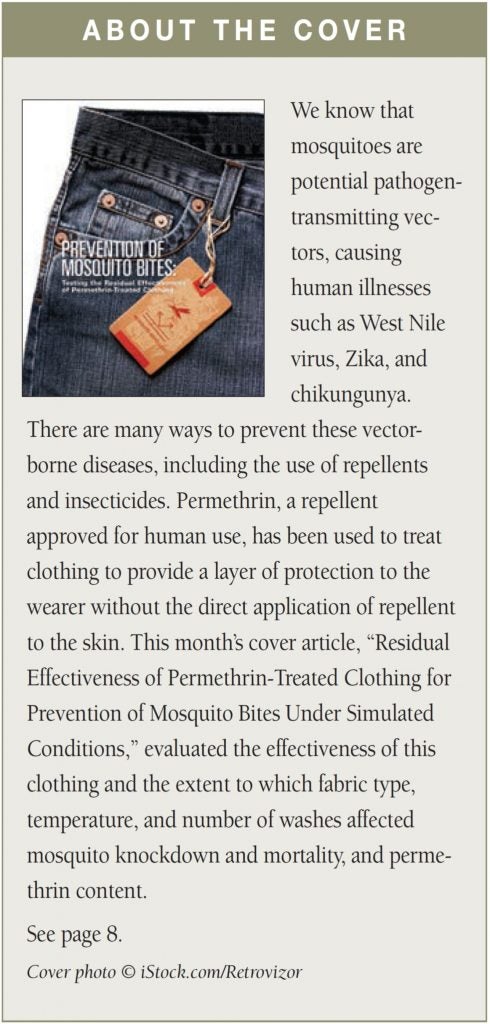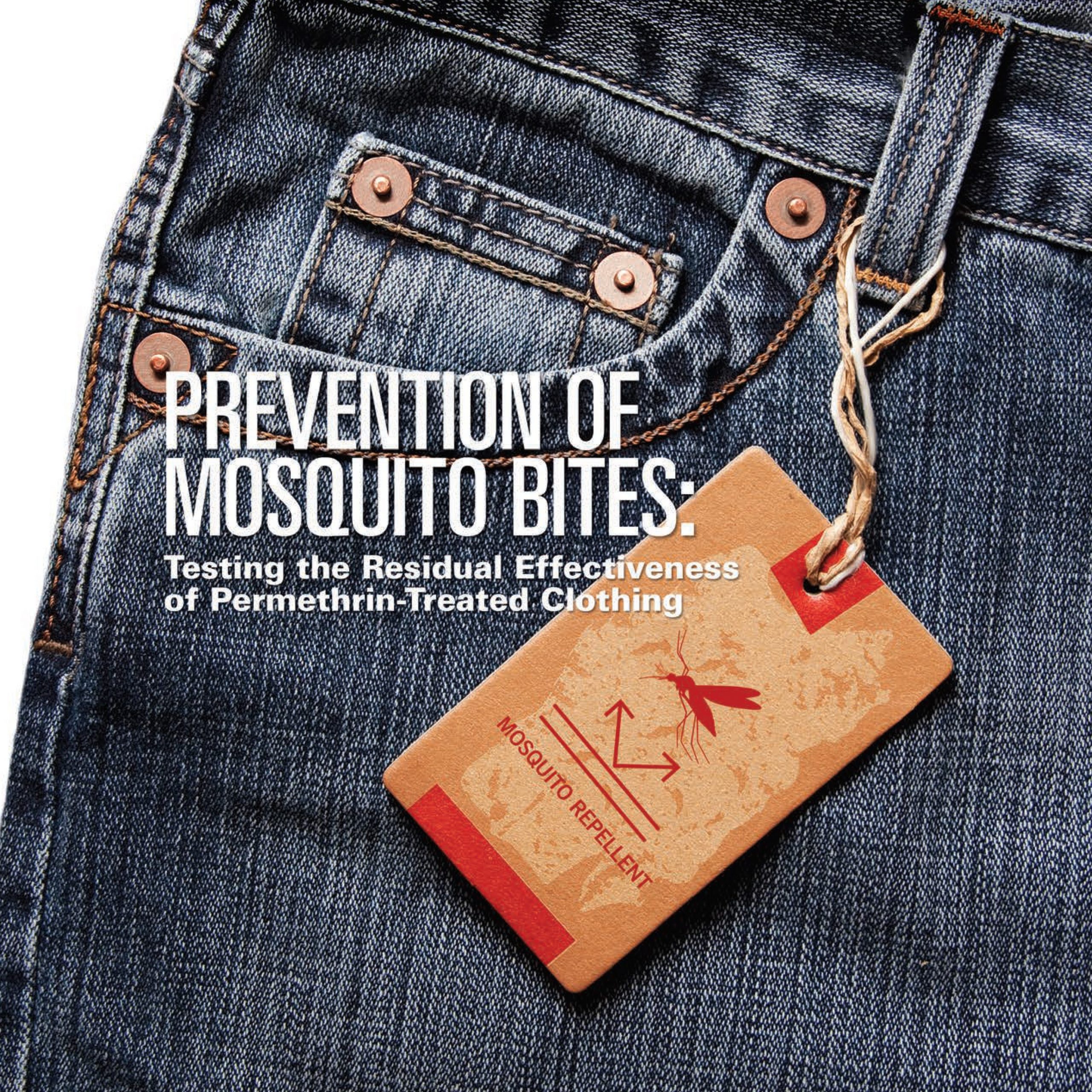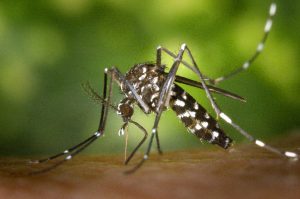 Richards SL, Balanay JG, Harris HW*, Banks VM* and Meshnick S (2017). Residual Effectiveness of Permethrin-Treated Clothing for Prevention of Mosquito Bites Under Simulated Conditions. Journal of Environmental Health 79(8):8-15.
Richards SL, Balanay JG, Harris HW*, Banks VM* and Meshnick S (2017). Residual Effectiveness of Permethrin-Treated Clothing for Prevention of Mosquito Bites Under Simulated Conditions. Journal of Environmental Health 79(8):8-15.
Abstract
Biological hazards such as exposure to ticks and mosquitoes can affect health. Permethrin-treated clothing is available to the public. We don’t currently understand, however, the effects of environmental factors such as fabric type, washing, sunlight, and temperature on permethrin content in treated clothing with respect to mosquito knockdown and mortality. We evaluated the extent to which fabric type (100% cotton denim jeans, 100% polyester work shirt, 35% cotton/65% polyester work shirt), light exposure (0 or 100%), temperature (18 °C, 32 °C), and number of washes (0, 3, 12, 36) affected mosquito knockdown 2 hours post-exposure, mosquito mortality 24 hours post-exposure, and permethrin content. All fabrics used in this study were treated with permethrin at a concentration of 125 µg/cm2. Denim fabric having no washes and no light exposure showed the highest amount of permethrin. Washing and light exposure significantly reduced the ability of permethrin-treated fabrics to induce mosquito knockdown and/or mortality under the simulated conditions used for this test. Temperatures tested did not affect permethrin content or mosquito knockdown and mortality. Long-lasting impregnation of uniforms protects against mosquito bites under simulated laboratory conditions. Employers and employees should consider the use of permethrin-impregnated clothing and uniforms in addition to daily repellent sprays.
*Jonathan Harris is a graduate of our MS Environmental Health program. Victoria Banks is a graduate of our BS Environmental Health program.




